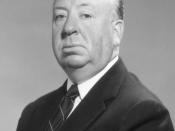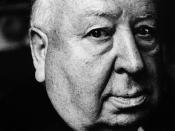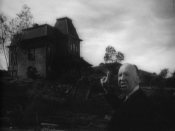Alfred Hitchcock is the undoubted master of suspense, and virtually invented the thriller genre. He began his film career in 1919, illustrating title cards for silent films at Paramount's Famous Players-Lasky studio in London. His first directed film was The Pleasure Garden in 1925. From there Hitchcock went on to make such films as The 39 Steps in 1935, an espionage thriller involving spies and murder set in London, Vertigo in 1958, a mystery about a man with a near insane obsession, North By Northwest in 1959, a cross-country manhunt for a mistaken government agent by a group of spies, and Psycho in 1960, a thriller based around murders inside of an isolated motel. In these four movies, Hitchcock used similarities such as McGuffins, suspense techniques, similar characters and situations, a similar basis, and movies that featured ordinary people in extraordinary situations. Each movie takes someone that could be found in everyday life, and put into a situation that most people would never dream of being in.
Alfred Hitchcock's movies have a very similar basis they feature ordinary people in extraordinary situations. For example, in The 39 Steps, Richard Hannay visits a typical music hall for an evening, and ends up with a murdered spy in his London apartment. Hannay started his night listening to music, and later came across a woman after shots had been fired inside of the music hall. Taking her into his apartment and away from danger turns quickly into an extraordinary situation as she reveals herself as a spy. Soon he has the government after him for murder, and a group of spies after him because of a secret that he doesn't hold. In Vertigo, a policeman named Scottie Ferguson follows a friend's wife, and eventually finds a extraordinary connection between her and...


